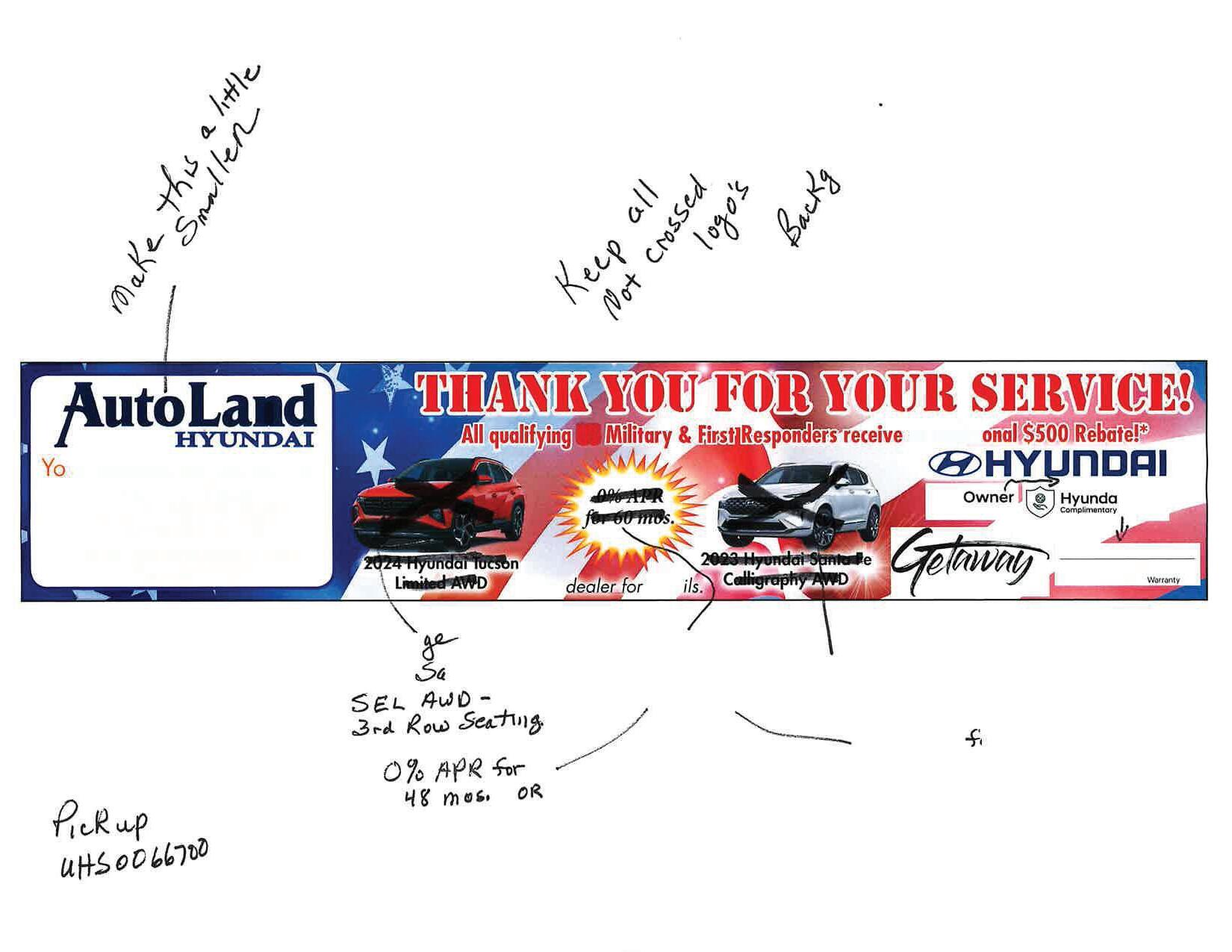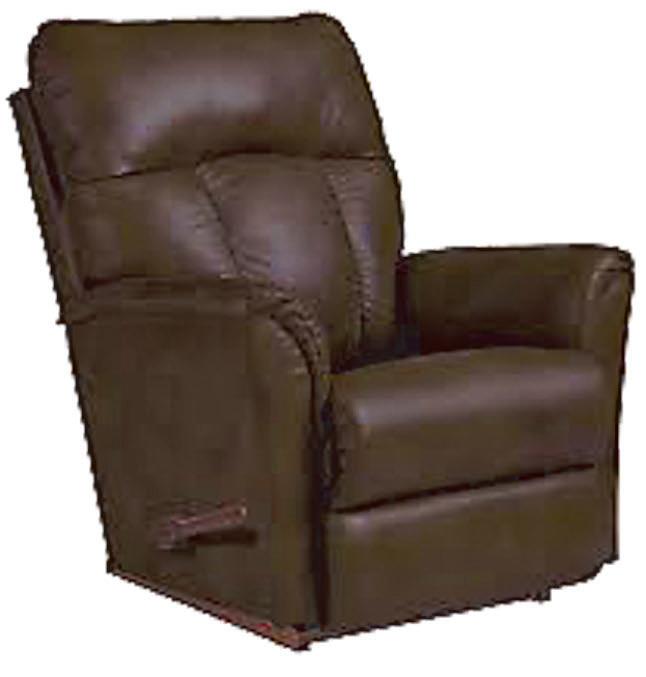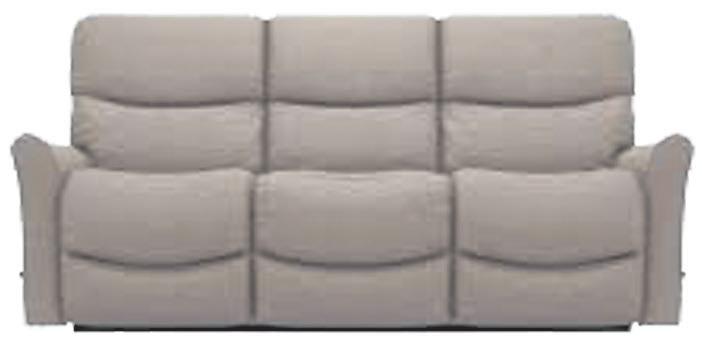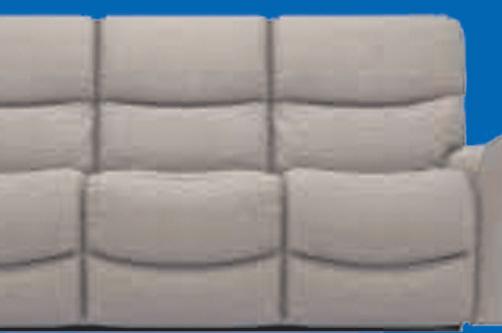




















11 Years In A Row
November 10, 2024



































November 10, 2024













After 2 decades of military service, ‘the Viking sub’ learned he had a tear in his aorta
By Deborah Lynn Blumberg American Heart Association News
During multiple tours in Afghanistan, Jeff Pharris conducted countless combat patrols and narrowly survived two bomb blasts.
After 20 years of U.S. Army service as a communications specialist and combat advisor, he was honorably retired from active duty.
Soon after, he started substitute teaching at his local middle school and elementary school in Hope Mills, North Carolina. The job was great in many ways.
His wife, Jennifer Pharris, teaches fourth grade, so the couple often had lunch together. Plus, by working part time, Jeff was able to care for their kids, Tristan, 13, Isabelle, 15, and Madison, 17. This was especially fulfilling since he'd missed years of their childhood during deployments.
Jeff's students brightened his day, too. At 5-foot10, with a full beard and bald head, middle schoolers
fondly nicknamed him "the Viking sub."
Around two years after retiring, Jeff was home alone on a Thursday afternoon. As he tidied up in the 10 minutes before Tristan got home from school, Jeff noticed a slight, sharp pain in his chest.
Jeff figured it was from a workout. He lifted weights and did cardio six to seven days a week to stay in shape and help manage his stress and anxiety.
Then he became lightheaded. He lowered to the floor. A layer of sweat covered his body. He looked at the clock. Tristan would walk through the door any minute. Jeff didn't want him to worry, so he got up and wiped the sweat away.
"Hey, buddy," Jeff said, as Tristan walked in. "I'm not feeling good." It occurred to Jeff he might be coming down with COVID-19. "You might want to keep your distance."
Five minutes later, Jeff left to pick up Jennifer from school. When he told her about his symptoms and lingering, moderate chest pain, they went directly to


the nearby Veterans Affairs hospital.
Jeff had blood work done and got an electrocardiogram, or EKG, to check his heart's electrical activity. All tests were normal. Next, he was told he'd need to have a CT scan so that doctors could take a closer look at his heart and blood vessels.
Soon after, doctors told Jeff his CT scan looked OK. But they did a second one, just to be sure. As Jeff waited for those results, his chest still hurt. Still, he was able to have some dinner.
Doctors recommended doing a stress test, which measures how well the heart works when pumping hard. They could do it the next day. Jeff decided to spend the night in the hospital to make it more convenient.
Well after midnight, Jennifer left to get home to the kids, knowing she still had to wake up at 4:45 a.m. to teach.
When the results of the second CT scan came back, a doctor called Jennifer to let her know that everything still looked good.
Not long after, the door to Jeff's room flew open. "Don't move, don't do anything," the emergency room doctor treating him said. "You have an aortic dissection." It's a rare, life-threatening tear in the inner layer of the aorta, the body's main artery.
Although tests kept saying nothing was wrong, the ER doctor could see that something was causing Jeff's symptoms. The ER doctor consulted with his father, a thoracic surgeon, which led to the ER doctor and a radiologist making the diagnosis.
Now that they knew what they were dealing with, they faced a new challenge: The VA hospital wasn't equipped to handle it.
The best option was to transport Jeff via helicopter. But none were available. So paramedics drove him an hour and a half to a hospital in Raleigh.
Jennifer was at her desk at school that morning waiting for her fourth graders to arrive when her phone rang. It was the hospital. "Jeff needs open-heart surgery," the caller said.
"He needs what?" she said, her voice rising. With tears in her eyes, she arranged for a substitute, readied her lesson plan and called her children. The family drove to Raleigh.



In the meantime, Jeff spoke with his surgeon. The doctor wanted to wait until Monday to operate. The first part of Jeff's aorta, where the aortic valve is located, was enlarged. If they waited, it might improve. Otherwise, Jeff would need a replacement valve and he'd have to take blood thinners for the rest of his life.
During surgery, fluid built up around Jeff's heart. His heart started beating irregularly, too, and doctors shocked his heart to restore a regular heartbeat.
The next day, when doctors removed a drainage tube, part of Jeff's lung collapsed. They had to reinflate his lung with another tube. Jeff stayed in the hospital for 12 days.
He went home with a walker two days before his 48th birthday with his aortic root still partially dilated. It wasn't clear if he'd need another surgery to replace the valve.
At home, he needed Jennifer's help to eat and bathe. Picking up a glass of water hurt. He could barely walk 10 feet.
When Jennifer went back to work, Jeff's two aunts from Nevada, as well as an Army buddy, were there to keep him company and assist with his recovery.
Jeff also had the companionship of his loyal black Labrador, Murphy, who had his own medical issues. The dog was recovering from a torn cranial cruciate ligament, or CCL, similar to an ACL in humans.
"That bonded us even closer," Jeff said.
First, Jeff and Murphy walked to the mailbox together.
Then, they made it to the end of the street. Jeff also did cardiac rehabilitation for two months. He was the
youngest person by decades.
Because doctors weren't sure what caused Jeff's heart problems, they weren't sure how to plot his recovery.
One doctor said he couldn't work out anymore. Another thought it was fine. Jeff ended up going back to the gym two months after surgery, with an important concession: He lifts lighter weights.
In addition to the physical benefits of working out, the experience itself is important for his mental health. "The gym is kind of like my personal church," he said.
A similar mood-lifter was returning to substitute teaching.
"I love it," he said. "It's almost therapeutic. The kids are so excited to see me."
The surgery was in February. He still takes blood pressure medication to relieve pressure on the aortic root. He's getting genetic testing done to see if it offers any explanations.
During recovery, Jeff also contended with a new fear of death.
In the Army, he accepted dying as a possible part of the job.
But after surgery, he worried that every twinge in his chest was a life-threatening problem.
Jeff's thoughts spiraled. He thought he could keep

another dissection from happening by eating specific foods, exercising precise amounts of time and strictly monitoring his vital signs. He went to the ER five times after surgery.
"Some of the issues were just in my head," he said. Not all, though. Over the summer, he learned the cause of severe abdominal pain was multiple stomach ulcers.
"It was almost like I stopped living my life," he said. "I was living to not die."
Jeff decided to see a therapist who specializes in veterans and post-traumatic stress disorder. He is actively participating in a treatment program for his mental health.
"Therapy has helped a lot," Jeff said. "I'm not afraid anymore. I don't check my blood pressure every 10 minutes."
He's also developed a bond with a fellow heart disease survivor.
Jennifer has noticed a change in Jeff over the past few months. "It is a journey, I'm always reminding him," she said. "But Jeff is in a much better place now."
Stories From the Heart chronicles the inspiring journeys of heart disease and stroke survivors, caregivers and advocates.








If you suspect that your loved one has been neglected or abused while
please call our office.



If you can’t work because of physical or mental conditions, please contact our office for a free evaluation of your case.
If you have applied for disability benefits and been denied, you need our experience on your side to fight for the benefits you deserve. We handle cases at every level of appeal and there’s no fee unless we win.




























MetroCreative
According to data from the Department of Veterans Affairs, surveys from the Pew Research Center and the U.S. Census Bureau, there were more than 18 million living military veterans in the United States by the end of 2023.
Seventy-two percent of those veterans are age 50 and older, and many served during wartime.
Military personnel make significant sacrifices to protect the freedoms Americans enjoy each day, and those efforts must never be forgotten, even if it’s been decades since service personnel have been on active duty.
Thirty-seven percent of living veterans are age 70 and older, and these brave individuals must face the challenges of aging as well as some, including chronic injuries, that might be traced to their time in the military. That makes helping aging veterans an especially worthy endeavor, and those interested in doing just that can consider the following ideas.
Working professionals can help aging veterans by providing advice or services free of charge or at steep discounts.
For example, accountants can offer to prepare and file aging veterans’ tax returns free of charge or, if the returns are complicated, at steep discounts. Financial advisors can visit a local veterans hall or home and speak to members or residents about managing money after retirement.
Invite veterans over for special events or gatherings
The Department of Veterans Affairs reports that veterans who served in the last 30 years comprise the largest number of living veterans.

Though there are still plenty of veterans who served before 1994, they may no longer have extensive social networks as more and more aging veterans pass away. Social connections are vital to long-term health, and researchers at the Center for Healthy Aging at Penn State University found that adults between the ages of 70 and 90 who reported more frequent, pleasant social interactions exhibited improved cognitive performance in the ensuing days. Individuals who want to help aging veterans can invite them over for special events, such as game watches, holiday gatherings or even weekly family meals.
Whether they suffered injuries during their time in the service or not, many aging veterans face the same physical limitations as others approaching or past retirement age. Offer to help aging veterans around the house. Mobility issues can make it hard to mow a lawn, tend to a garden or clean the interior of a home. Such tasks are made much easier when others pitch in, and these gestures can be a great way for families to show their appreciation to the brave individuals who protected the freedoms Americans enjoy each day. There’s no shortage of ways to help aging veterans, many of whom could use a helping hand as they navigate their golden years.



























Millions of people make considerable sacrifices to protect the freedoms of their fellow citizens. According to the Pew Research Center and data from the Department of Veterans Affairs and the U.S. Census Bureau, there are currently more than 18 million living veterans in the United States.
The 2021 Census counted 461,240 veterans in Canada, according to Veterans Affairs Canada.
The term “veteran” refers to a person who served in the active military, naval, air service or space service and was discharged or released under conditions other than dishonorable. In the U.S., there are actually five types of protected veterans, according to the Vietnam Era Veterans’ Readjustment Assistance Act of 1974. Under VEVRAA, a veteran
may be classified as a disabled veteran, recently separated veteran, active duty wartime or campaign badge veteran, or Armed Forces service medal veteran.
Veterans deserve respect and admiration all year long but also get their own holiday each November. Veterans Day celebrates veterans’ patriotism and willingness to sacrifice and serve. People can consider these eight unique ways to honor the veterans in their community this Veterans Day.
1. Attend events. Organize or participate in local Veterans Day celebrations, such as parades and ceremonial events.
2. Get involved with veterans’ affairs. Support veterans by volunteering with organizations that assist them, such as the VA, local veteran’s groups, VA hospitals or charities dedicated to veteran services.
3. Petition for veteran speakers.
Reach out to schools, scout troops or other groups and arrange opportunities for veterans to share their stories and contributions. Learning about these men's and women's sacrifices can heighten individuals’ appreciation for veterans.
4. Support the families of veterans. Reach out to veterans’ families, who also must make sacrifices and concessions. Anything from shopping, babysitting, doing chores or making a meal can help the families of veterans.
5. Make a donation. If finances allow, make contributions to reputable charities that provide services for veterans, such as those that offer mental health counseling or job placement services. If there isn’t a charity that fits your vision, begin one.
6. Hire veterans to work. If you are a business owner or hiring manager, consider hiring veterans for open positions
at your company. It can be challenging to re-enter the workforce after service, so make it known that your firm welcomes veterans.
7. Offer personal acknowledgments. Take the time to speak to veterans and thank them for their service. If possible, when dining out, ask the server if you can pay for the meal of a veteran who is also dining that day.
8. Don’t forget the fallen veterans. Although Memorial Day is designed to honor those who lost their lives through military service, people still can honor the fallen veterans on Veterans Day by sharing stories or placing flags at veteran cemeteries.
Veterans Day is celebrated on November 11, marking an opportunity to express gratitude and support for the scores of veterans who have served honorably.


























The holiday season is when family and friends gather to reconnect and celebrate. For many families, people are missing from these celebrations, whether they sacrificed their lives defending the country or died honorably years after serving in the military.
As individuals plan to add spirit to homes and businesses through decorations and other touches, they also can consider adding a bit of the holidays to the places where their beloved service members lie in eternal rest. This is the main premise behind the Wreaths Across America organization.
The primary activity of Wreaths Across America is to distribute wreaths to be placed on graves in military cemeteries. On National Wreaths Across America Day, which takes place on a moving day each December at thousands of locations, volunteers place wreaths on headstones and read out the names of the service members.

MetroCreative
The organization was founded by Morrill Worcester and his wife, Karen, to teach all generations about the value of their freedoms and the importance of honoring those who sacrificed so much to protect them. Worcester, owner of the Worcester Wreath Company




in Maine, remembered a trip to Washington D.C. as a child, which included visiting Arlington National Cemetery. In 1992, when Worcester’s business had a surplus of wreaths nearing the end of the holiday season, he remembered an indelible image of wreaths on graves at Arlington. He devised a way to put those wreaths to use, honoring the country’s veterans. Arlington National Cemetery was the first place to receive wreaths. Since then, the movement has grown to include cemeteries across the nation. In 2022, Wreaths Across America and its national network of volunteers placed more than 2.7 million sponsored veterans’ wreaths on the headstones of our nation's service members at 3,702 participating locations. Although veterans are remembered each Memorial Day and Veterans Day, they can be honored 365 days a year for their service and sacrifices. Wreaths Across America offers a meaningful way to set aside time during the holiday season to show appreciation for veterans who are no longer with us. Those looking to get involved can visit wreathsacrossamerica.org to learn more about volunteer opportunities or bringing WAA into their communities.
























In this photo provided by The Valley Breeze, Civil War re-enactors fold an American flag near an urn, center, containing the cremated remains of Byron R. Johnson, a Union soldier who was born in Pawtucket, R.I., in 1844 and fought in the Civil War, during funeral services Oct. 16 at Oak Grove Cemetery, in Pawtucket, after his remains were transferred from storage at a cemetery in Seattle.
Associated Press
PAWTUCKET, R.I. — For several decades, the cremated remains of more than two dozen American Civil War veterans languished in storage facilities at a funeral home and cemetery in Seattle. The simple copper and cardboard urns gathering dust on shelves only had the name of each of the 28 soldiers — but nothing linking them to the Civil War. Still, that was enough for an
organization dedicated to locating, identifying and interring the remains of unclaimed veterans to conclude over several years that they were all Union soldiers deserving of a burial service with military honors.
"It's amazing that they were still there and we found them," said Tom Keating, the Washington state coordinator for the Missing In America Project, which turned to a team of volunteers to confirm their war service through genealogical research. "It's something long overdue. These people have been waiting a long time for a burial."
Most of the veterans were buried in August at Washington's Tahoma National Cemetery.
In a traditional service offered to Civil War veterans, the historical 4th U.S. Infantry Regiment dressed in Union uniforms fired musket volleys and the crowd sang "The Battle Hymn of the Republic." Names were called out for each veteran and their unit before their remains were brought forward and stories were shared about their exploits. Then, they were buried.
Among them was a veteran held at a Confederate prison known as Andersonville. Several were wounded in combat and others fought in critical battles including Gettysburg, Stones River and the Atlanta campaign. One man survived being shot
thanks to his pocket watch - which he kept until his death — and another deserted the Confederate Army and joined the Union forces.
"It was something, just the finality of it all," Keating said, adding they were unable to find any living descendants of the veterans.
While some remains are hidden away in funeral homes, others were found where they fell in battle or by Civil War re-enactors combing old graveyards.
Communities often turn reburials into major events, allowing residents to celebrate veterans and remember a long-forgotten war. In 2016, a volunteer motorcycle group escorted the remains of one veteran cross country from Oregon to the final resting place in Maine. In South Carolina, the remains of 21 Confederate soldiers recovered from forgotten graves beneath the stands of a military college's football stadium were reburied in 2005. Sometimes reburials spark controversy.
REMAINS, Page 18


this
provided by The Valley
Civil War re-enactors participate in ceremonies during funeral services Oct. 16 for the burial of the cremated remains of Byron R. Johnson, a Union soldier who was born in Pawtucket, R.I. in 1844 and fought in the Civil War, during funeral services, Wednesday, Oct. 16, 2024, at Oak Grove Cemetery, in Pawtucket, after his remains were transferred from storage at a cemetery in Seattle.


The discovery of the remains of two soldiers from the Manassas National Battlefield in Virginia prompted an unsuccessful attempt in 2018 by several families to have DNA tests done on them. The Army rejected that request and reburied them as unknown soldiers at Arlington National Cemetery.
Along with those buried at Tahoma, Keating said, several others will be buried at Washington State Veterans Cemetery and a Navy veteran will be buried at sea. The remains of several more Civil War veterans were sent to Maine, Rhode Island and other places where family connections were found.
Among them was Byron Johnson. Born in Pawtucket in 1844, he enlisted at 18 and served as a hospital steward with the Union Army. He moved out West after the war and died in Seattle in 1913. After his remains were delivered to Pawtucket City Hall, he was buried with military honors at his family's plot in Oak Grove Cemetery.
Pawtucket Mayor Donald R. Grebien said Johnson's

Among them was Byron Johnson. Born in Pawtucket in 1844, he enlisted at 18 and served as a hospital steward with the Union Army. He moved out West after the war and died in Seattle in 1913.
burial service was the right thing to do.
"When you have somebody who served in a war but especially this war, we want to honor them," he said. "It became more intriguing when you think this individual was left out there and not buried in his own community."
Grebien said the burials recall important lessons about the 1861-1865 war to preserve the Union, fought between the North's Union Army and the Confederate States of America at a cost of hundreds of thousands of lives.
"It was important to remind people not only in Pawtucket but the state of Rhode Island and nationwide that we have people who sacrificed their lives for us and for a lot of the freedoms we have," he said.
Bruce Frail and his son Ben — both long active in

“Believing



Thanks to our customers and friends for your

the Sons of Union Veterans of the Civil War — were on hand for service. Ben Frail was also a re-enactor at Johnson's service, portraying a Union Army captain.
"It's the best thing we can do for a veteran," said Bruce Frail, a former commander-in-chief with the Sons of Union Veterans and state coordinator for Missing In America Project.
"The feeling that you get when you honor somebody in that way, it's indescribable," he said.
The task of piecing together Johnson's life story was left to Amelia Boivin, the constituent liaison in the Pawtucket mayor's office. A history buff, she recalled getting the call requesting the city take possession of his remains and bury them with his family. She got to work and Johnson's story became the talk of City Hall.
She determined Johnson grew up in Pawtucket, had two sisters and a brother and worked as a druggist after the war. He left to make his fortune out West, first in San Francisco and eventually in Seattle, where he worked nearly up until his death. It doesn't appear Johnson ever married or had children, and no living relatives were found.
"I felt like it was resolution of sorts," Boivin said. "It felt like we were doing right for someone who otherwise would have been lost to history."


























